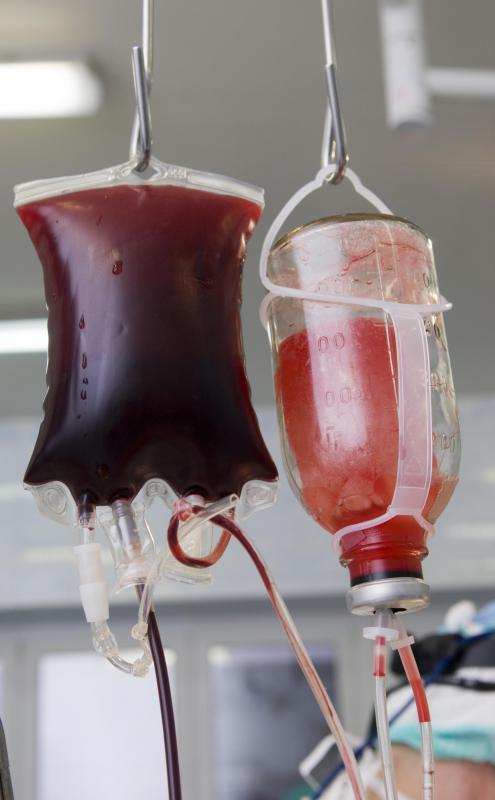At TheHealthBoard, we're committed to delivering accurate, trustworthy information. Our expert-authored content is rigorously fact-checked and sourced from credible authorities. Discover how we uphold the highest standards in providing you with reliable knowledge.
What Is Hepatocellular Jaundice?
Hepatocellular jaundice defines a yellow tint of the skin, eyes, or mucous membranes caused by a dysfunctional liver. The condition occurs when too much bilirubin is produced, or when the liver cannot metabolize bilirubin and excrete it from the body as bile. Bilirubin represents a byproduct produced by red blood cells, which the liver converts to bile for excretion in urine.
Many diseases and conditions might lead to hepatocellular jaundice, including hepatitis, malaria, cirrhosis, and autoimmune disorders. Obstructions in bile ducts might also cause the skin to become yellow from too much bilirubin. Doctors typically test patients to discover the underlying condition causing hepatocellular jaundice.

Hepatic jaundice might stem from excessive alcohol use that damages the liver. Hepatitis B or hepatitis C might also affect liver function and lead to hepatocellular jaundice, along with some drugs and toxins in chemicals. Malaria increases the number of red blood cells and may hinder the liver’s ability to metabolize excess bilirubin produced as a byproduct.

Conditions defined as post-hepatic jaundice usually center on blockages in the biliary tract. Gallstones might form in bile ducts and prevent the release of bile into the intestines for excretion. Pancreatitis, defined as inflammation in the pancreas, sometimes causes obstructions in the duct leading from the pancreas to the liver. Cancer of the liver or related internal organs could also block bile ducts and increase levels of bilirubin in the blood.

Neonatal hepatocellular jaundice occurs in newborn babies born with immature livers. The condition usually goes away within a few days after exposure to colored light. If hepatocellular jaundice in infants is caused by an incompatibility of blood types between the mother and child, blood transfusions might be necessary. Some children might be born with birth defects of the liver or bile ducts that often need surgery to correct.

During the diagnosis process, doctors typically check blood levels of bilirubin and red blood cell counts. A hepatitis test and screening for anemia might also be done. X-rays or scans of the abdomen might indicate blockage in the gallbladder or pancreas from stones or tumors. These tests might also show damage to the liver from other disorders.
Hepatocellular jaundice might be prevented by reducing alcohol use and vaccinations to protect against hepatitis. People traveling to a region where malaria is present should be vaccinated against the disease. Safe food handling practices might prevent contamination causing hepatitis A. Avoiding intravenous drugs and risky sex might prevent autoimmune diseases caused by viruses.
AS FEATURED ON:
AS FEATURED ON:


















Discuss this Article
Post your comments